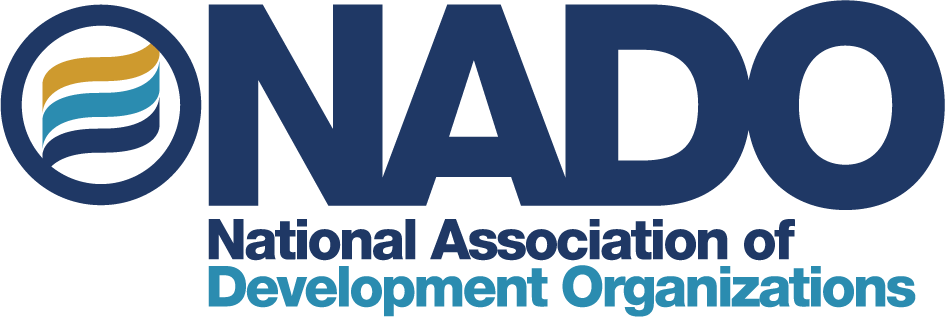Click here to jump to the featured case studies.
In the wake of natural disasters, local and regional economies are extremely vulnerable. Businesses can suffer costly damage, be cut off from supply lines, lose sales, and experience interrupted operations. In some cases, they may even be forced to close permanently. The Insurance Information Institute estimates that 15 to 40 percent of the businesses affected by natural and manmade disasters never reopen.[1] When businesses and industries fail or falter, the communities they serve can feel serious impacts, ranging from a lack of access to goods and services to the loss of income and jobs.
Communities and regions across the country are protecting their economies from the devastating consequences of disasters by putting innovative mitigation, response, and recovery strategies into action. They are providing post-disaster gap financing to small businesses in emerging sectors, rebuilding their downtowns and main streets in ways that are safe and resistant to the effects of extreme weather, and analyzing their economic vulnerabilities and addressing them through industry diversification and other means. They are also developing databases of business and infrastructure information to quickly identify recovery needs, helping businesses prepare for future events, and integrating disaster resilience into economic development and land use plans. These regions and communities are taking advantage of the opportunities natural disasters can provide to rebuild better and stronger than before. While extreme weather events are traumatizing and bring many new challenges, they also offer chances to re-envision the community’s future, identify strengths to capitalize on and weaknesses to address, and target recovery funding accordingly. For example, many communities and regions are focusing their recovery efforts on promoting development that is located out of harm’s way, preserves important natural and working lands, and takes advantage of the historic buildings and traditional downtowns that attract and retain businesses and young people. Others are grasping the opportunity to think creatively about economic development, strengthening entrepreneurship programs, retraining the workforce, and taking an asset-based approach that lays the groundwork for long-term wealth creation.
The Economic Development Administration (EDA), part of the U.S. Department of Commerce, plays a vital role in supporting economic recovery and resilience. Under the National Disaster Recovery Framework, a Federal Emergency Management Agency-established guide for coordinating disaster planning and recovery efforts at all levels of government, EDA has been tasked with serving as the coordinating agency for the Department of Commerce for the Economic Recovery Support Function. This Recovery Support Function, one of six, facilitates the integration of federal agency expertise to help local, state, and tribal governments and the private sector sustain and rebuild businesses and employment and develop opportunities that result in sustainable and economically resilient communities. Additionally, EDA’s strong relationship with the nation’s 380+ Economic Development Districts (EDDs) enables it to provide effective disaster recovery funding to communities in need. EDDs are particularly well-positioned to lead regions through the recovery process. Their regional perspective and interdisciplinary focus—they manage and deliver economic development, land use, transportation, workforce, aging, and other programs—allows them to promote the long-term competitiveness and sustainability of their regions as a whole. They have long-standing relationships with local governments, state and federal agencies, business owners, educational and medical institutions, and other key partners and have proven abilities to foster intergovernmental and cross-sectoral collaboration. Additionally, they possess strong technical skills, broad expertise, and solid understanding of their regions’ challenges and opportunities, and can provide critical capacity that local governments may lack.
This case study series produced by the NADO Research Foundation highlights the efforts of EDDs that have received disaster recovery funding from EDA. The case studies demonstrate how regions have effectively used federal funding to address the impacts of natural disasters, become more resilient to future events, and increase economic competitiveness and quality of life. While every disaster and every region have unique characteristics, EDDs and other organizations can learn a lot from each other about planning for disasters during so-called “blue-sky” periods, building partnerships, pursuing non-traditional funding sources, encouraging community engagement, and seizing the abundant opportunities to build back better following an event.
Unfortunately, severe weather and climate change have become costly and unpredictable parts of our lives. However, sharing stories and strategies through these case studies and other resources can help us to be better prepared the next time the storm clouds gather.
- Southwest Arkansas: Promoting Disaster Resilience and Recovery through Better Data
- East Central Iowa: On-the-Ground Assistance and Business Loans Support Recovery and Economic Competitiveness
- Greater New Orleans: Building on Competitive Advantages to Strengthen Economic Resilience
- Texas Gulf Coast: Diversifying Disaster Recovery Investments for Long-term Economic Revitalization
- East Central Vermont: Recovery after Tropical Storm Irene Paves the Way for Future Resilience
- Southwestern Massachusetts: Strengthening Businesses and Communities through Disaster Recovery
Additional case studies coming soon.
Click here to download a compiled report (in PDF format) describing the work of EDDs that received funding from EDA to help recover and rebuild from 2008 disasters in EDA’s Austin region and nearby states. This report includes the case studies listed above from Southwest Arkansas, East Central Iowa, Greater New Orleans, and the Texas Gulf Coast.
This project is supported by EDA under Agreement Nos. 08-79-04379 and 01-79-14223. Any opinions, findings, or recommendations expressed in these case studies are those of the author and do not necessarily reflect the views of EDA or the NADO Research Foundation.
[1] Hartwig, Robert. Florida Case Study: Economic Impact of Business Closures in Hurricane Prone Counties. June 2002. Insurance Information Institute.




